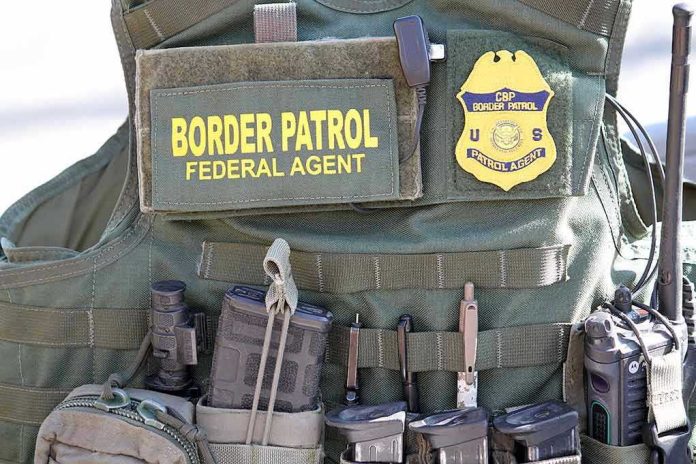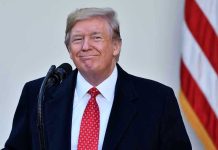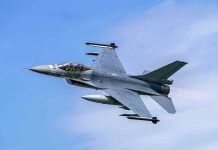
Gunfire aimed at federal agents in the heart of Chicago has transformed a simmering policy dispute into a citywide reckoning over who holds power—and who pays the price—when local resistance clashes with federal force.
Story Snapshot
- Shots were fired at U.S. Border Patrol agents during an immigration operation in Chicago’s Little Village neighborhood; the suspect remains at large.
- The incident erupted amid Operation Midway Blitz, a controversial federal crackdown in a historically resistant, immigrant-rich community.
- Violent confrontations, judicial intervention, and political fallout have intensified the standoff between federal authorities and local stakeholders.
- The episode exposes escalating risks for law enforcement and residents as sanctuary city policies collide with aggressive enforcement mandates.
Gunfire in Little Village: Federal Authority Meets Urban Resistance
Federal agents conducting immigration enforcement in Chicago’s Little Village on a Saturday morning encountered more than just protests. Around 9:30 a.m., a man in a black Jeep fired multiple rounds at Border Patrol agents boxed in by a hostile crowd. Agents escaped uninjured, but the attack forced an immediate escalation: protesters hurled bricks and paint cans, and police scrambled to extract the agents as the suspect disappeared into the city’s maze of streets.
Attempts to ram the Border Patrol convoy and further confrontations near an FBI facility followed. These events unfolded against a backdrop of mounting protests and legal battles, all set in a neighborhood where federal presence is widely seen as an existential threat to community integrity and safety.
Operation Midway Blitz: The Flashpoint for Community and State
Operation Midway Blitz, launched just two months earlier, put Chicago’s century-old sanctuary status to the test. Little Village, a dense, vibrant Mexican-American enclave, has become ground zero for the operation’s most contentious raids. Federal agents, emboldened by directives from the Department of Homeland Security, have ramped up arrests, sparking organized resistance. Advocacy groups have mobilized “ICE watch” patrols and legal observers, aiming to document every move and hold authorities accountable. The collision of federal muscle and local resolve has turned sidewalks into battlegrounds and forced the city’s leaders to walk a precarious line between public order and the protection of civil rights.
This new phase of enforcement comes after a federal judge’s injunction sharply restricted agents’ use of force, reflecting judicial concern over previous allegations of misconduct and false statements by Border Patrol officials. The Department of Justice is now appealing those restrictions, arguing that federal officers face unprecedented risks in hostile urban settings. The stage is set for further legal and political clashes as both sides double down.
Escalating Tensions: Community Pushback and Law Enforcement Response
November 8 did not mark the first confrontation, but it shattered any remaining illusions of predictability. Residents and protesters, long wary of federal tactics, responded to the gunfire with a mix of outrage and defiance. Community leaders condemned the violence but reserved harsher criticism for the continued presence of federal agents, warning that aggressive tactics invite escalation and erode trust. The Chicago Police Department, thrust into the role of both mediator and enforcer, is tasked with maintaining order while repairing frayed relations with a skeptical public. The possibility of further violence looms, as heightened security and a manhunt for the shooter keep tensions on a knife’s edge.
The city’s judiciary, meanwhile, has asserted its authority, issuing injunctions and demanding transparency from federal agencies. Legal scholars and civil rights advocates argue that these interventions are crucial checks on power, especially as national debates over sanctuary policies and federal overreach intensify. The episode has galvanized advocacy groups, who see the incident as proof that unchecked enforcement only sows chaos and fear.
Broader Fallout: Policy, Politics, and the Price of Confrontation
This incident is not merely a local crisis—it is a warning shot for cities across America grappling with the boundaries of federal authority. Short-term, Chicago faces disrupted businesses, traumatized families, and strained law enforcement resources. Long-term, the outcome of ongoing legal battles could reshape how—and where—federal immigration laws are enforced, setting precedents for the use of force and the limits of sanctuary. The DOJ’s appeals and DHS’s statements signal a willingness to push the conflict to higher courts, where decisions could ripple nationwide.
For the residents of Little Village, the price is already steep. The neighborhood, a symbol of immigrant resilience, now finds itself under siege, with daily life overshadowed by fear and uncertainty. The city’s response in the coming weeks—whether through negotiation, policy change, or further enforcement—will reveal much about the nation’s appetite for compromise versus confrontation in the ongoing immigration debate.
Sources:
ABC News: Chicago police respond to report of shots fired at federal agents
ABC7 Chicago: Immigration agents pepper spray 1-year-old girl in Cicero
ABC News: DHS shooter at large after firing at Border Patrol in Chicago










